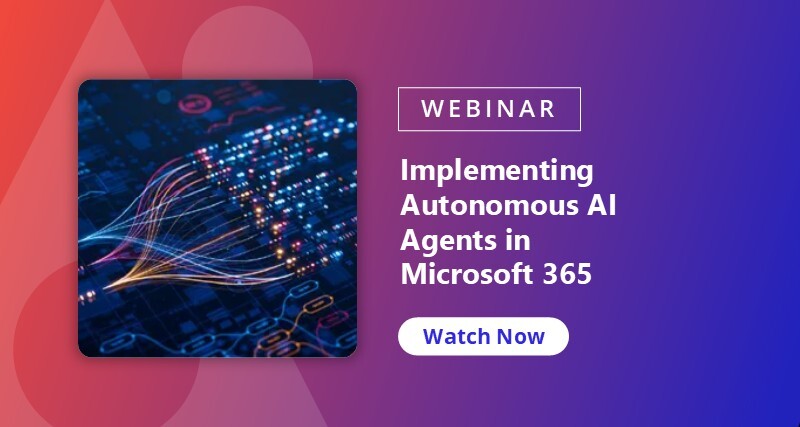Microsoft’s Power Platform has become a powerhouse for innovation, especially with the rise of Copilot Studio agents and low-code development. But as adoption increases, so does the complexity of managing data, apps, agents, flows, and reports. At the center of it all? Environments.
A strong environment strategy is critical to balancing innovation with governance, scalability with security, and experimentation with organizational readiness. Here’s how to make sense of it all, and why the default environment might be your biggest hidden risk.
What Are Power Platform Environments?
Environments are dedicated workspaces used to store, build, and manage Power Platform components like Copilot Studio agents, Power Apps, and Power Automate flows. Each environment serves as a container with its own Dataverse storage and access policies.
Organizations use environments to:
- Separate resources by function, department, or business unit.
- Isolate apps and data by geography or compliance requirements.
- Control access based on user roles or teams.
- Support secure development and production processes.
Every tenant gets a pooled capacity model, meaning storage is allocated at the tenant level and distributed across environments based on organizational needs.
Why a Strong Environment Strategy Matters
If you’re scaling Power Platform adoption – especially with Copilot and other AI-driven agents – a well-structured environment strategy is key to:
- Application Lifecycle Management. Separate environments allow you to establish Development > Testing > Production pipelines, ensuring solutions are developed and tested before going live. This is not just good practice; it’s essential when agents or apps become business-critical.
- Security and Access Control. Environments help define and enforce who can build or modify what. This process minimizes the risk of sensitive data exposure or shadow IT.
- Geographic and Compliance Needs. Need to keep data residency in a specific country? Or comply with strict regulations in healthcare, finance, or defense? Dedicated environments make it easier to meet regional and industry-specific requirements.
- Data Separation. When business units or the applications they use shouldn’t (or legally can’t) commingle data, isolated environments ensure clean separation and enforce governance boundaries.
- Cost Containment: From pilot projects to seasonal solutions, separate environments (with pay-as-you-go licensing) help contain costs by only allocating resources when they’re needed most.

Understanding the Default Environment
Every Microsoft 365 tenant comes with a default environment — and it’s not going anywhere. You can’t delete it, and you can’t fully lock it down. All users are automatically granted maker access, giving them the power to build apps and flows freely.
Why is that a problem?
- Innovation Sprawl: Maker access is great for experimentation, but without governance, it often leads to cluttered, redundant, or abandoned solutions.
- Shadow IT Risks: With third-party connectors (e.g., Salesforce, ServiceNow, or Google) enabled by default, users can unintentionally introduce data leakage or compliance issues.
- Lack of Backup or Restore Capabilities: You can’t back up or restore the default environment as a whole, which puts business-critical solutions at risk.
- No ALM: Since it’s not built for production-level support, deploying or maintaining critical solutions in default is a governance anti-pattern.
The default environment may have been designed for innovation, but without oversight, it can quickly become a dumping ground for untracked, unsupported solutions.
Common Scenarios for Creating Multiple Environments
To avoid overloading your default workspace, organizations should create multiple environments for different use cases:
| Scenario | Why It Matters |
| Geographic Compliance | Stay aligned with data residency and sovereignty requirements |
| Connector Isolation | Control access to sensitive third-party or premium connectors |
| Data Separation | Isolate environments for business units that can’t share data |
| Cost Containment | Reduce waste by assigning environments only when needed |
| ALM for Critical Solutions | Enable Dev/Test/Prod workflows for business-critical applications and agents |
What Good Looks Like: A Mature Environment Strategy
As adoption of Power Platform (and AI agents) grows, your environment strategy should evolve to meet the scale and sophistication of your organization. Here’s what maturity looks like:
- Stale Object Cleanup. Old flows, unused agents, and one-off experiments should be periodically cleaned up to reduce risk and clutter.
- Business Impact Evaluation. Track the value and usage of each solution, and move impactful ones into more secure, production-ready environments.
- Safe Innovation Spaces. Provide clear guidelines and boundaries for experimenting with first-party and approved connectors.
- Defined Environment Purposes. Every environment should have a documented purpose, known to both IT and business users, and ideally shared with your internal maker community.
- Governed Routing for New Projects. Use criteria such as solution complexity, ownership, or business criticality to route new projects to the right environment from the start.
Don't Let the Default Define You
Power Platform is only as powerful as the governance surrounding it. Without a defined environment strategy, organizations risk sprawl, cost overruns, and security gaps, especially as Copilot and low-code development expand. By taking proactive steps to organize and govern your environments, you create a foundation where both IT and makers can thrive.


